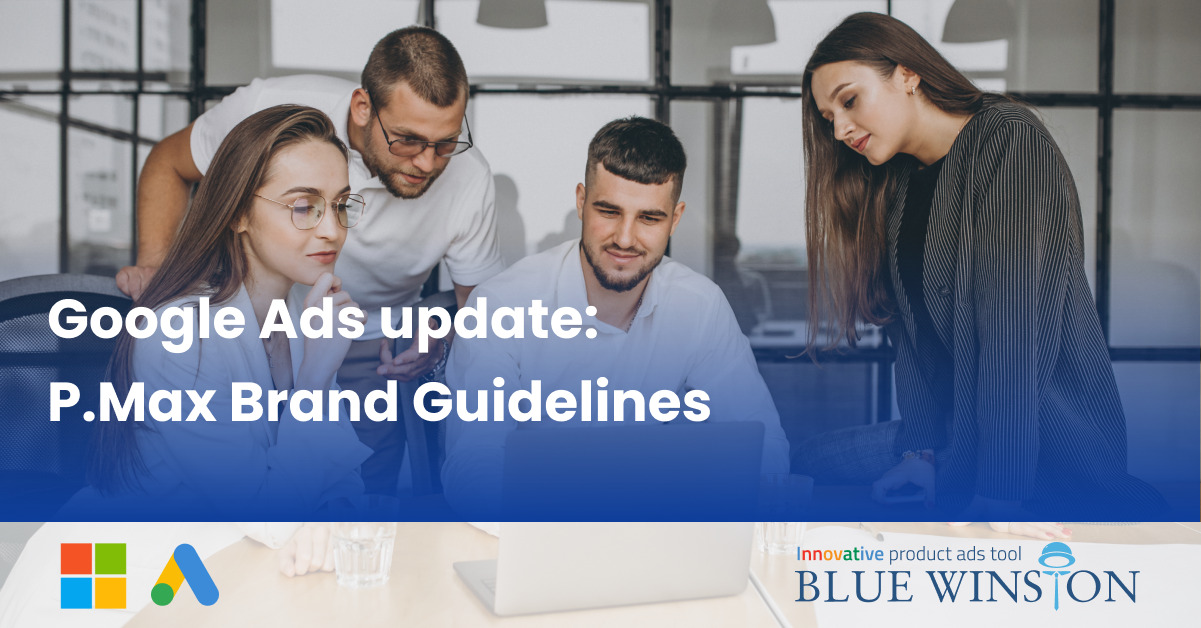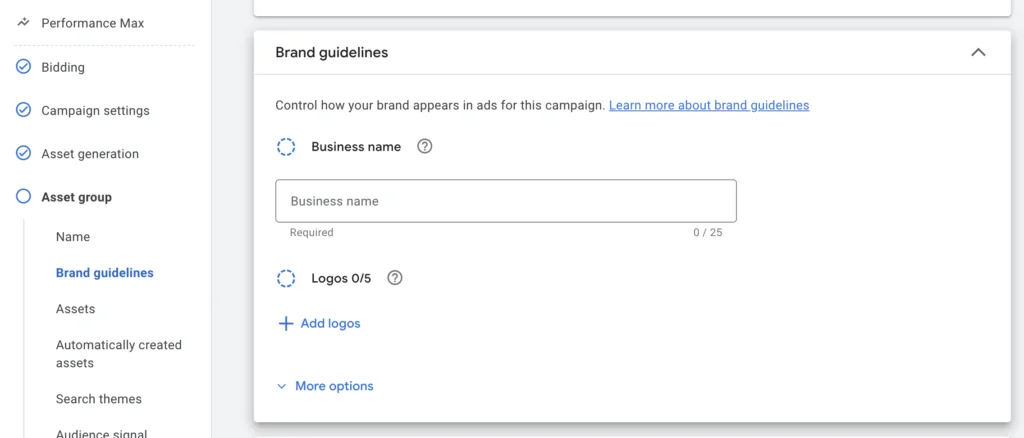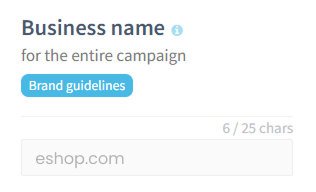Starting in June 2025, Google Ads will introduce a significant new feature that will change how visual identity is managed in Performance Max (P.Max) campaigns. This update is called Brand Guidelines – a new functionality that allows advertisers to ensure consistent display of their business name and logo across the entire campaign. This feature is completely new and, at the moment, is not available in other advertising platforms.
What’s Changing?
Until now, it was possible to set a different business name and logo for each asset group within a campaign, but with this update, Google is moving these brand elements to the campaign level, meaning all asset groups within a P.Max campaign will now share the same business name and logo.
Google will begin rolling out this change automatically starting June 2025. To maintain full control over how your brand appears in ads, it’s recommended to manually define your brand assets. If you don’t, Google will automatically select the business name and logo from the best-performing asset group in the campaign.
What Are Brand Guidelines?
The goal of Brand Guidelines is to ensure consistent branding in automatically generated ads powered by Google’s AI. In practice, this means you can set your business name, upload 1 to 5 logos, and optionally define brand colors and fonts, all in one place. These settings will then be used across all relevant ad formats – including YouTube video ads and responsive display ads on the Google Display Network.
Source: Joveo
Automatic Brand Detection
Setting up Brand Guidelines is simple and happens directly during the creation or editing of a P.Max campaign. When you enter your final URL (e.g., your homepage), Google will try to automatically detect your brand – meaning your business name and logo – and pre-fill the fields. If you’ve used the same URL in a previous campaign, Google will remember and suggest your past settings. This also applies to suggested colors and fonts, which Google will estimate based on your website’s design. However, you’ll still need to manually confirm these values.
By setting Brand Guidelines once at the campaign level, you ensure that your brand identity is displayed consistently across all ads, saving you time and reducing the risk of inconsistent branding.
What Does This Mean for BlueWinston Users?
For BlueWinston users, this update means that once Google applies the new structure, the business name and logo will be unified for the entire P.Max campaign.
In the BlueWinston interface, you will see a clear notice that these brand elements are shared across the campaign. For example, when entering the business name (as shown in the screenshot below), a label will appear indicating that the setting is part of the Brand Guidelines.
The same applies when adding a logo.
In practice, this means that if you edit the brand information in one asset group, the change will automatically apply to all asset groups within the campaign. It will no longer be possible to set different brand details for each product group individually.
When working with BlueWinston, it’s important to remember that business name and logo now apply to the entire campaign. Therefore, we recommend choosing visual elements that represent your brand consistently and effectively across all asset groups.
What Do We Recommend?
- Review your existing P.Max campaigns in Google Ads.
- Create your own Brand Guidelines and add your business name and logo.
- Optionally define brand colors and fonts that best represent your brand.
- Watch for notifications in the UI informing you that these brand elements apply to the entire campaign.
- Prepare in advance and make sure all your campaigns have the correct, unified brand settings.
Conclusion
This move by Google aims to increase the professionalism and consistency of ad output, while also giving advertisers greater control over how their brand appears in automatically generated ads. That’s why we strongly recommend not relying on automation alone, and instead setting up your own Brand Guidelines as soon as possible.
 Get Microsoft Ads setup, tools and coupon for
Get Microsoft Ads setup, tools and coupon for  free!
free! 








